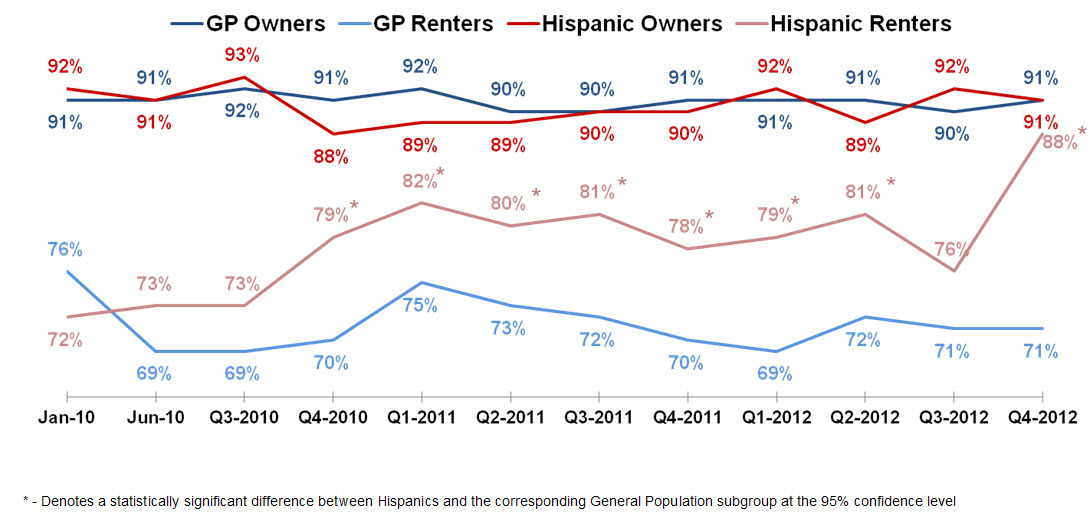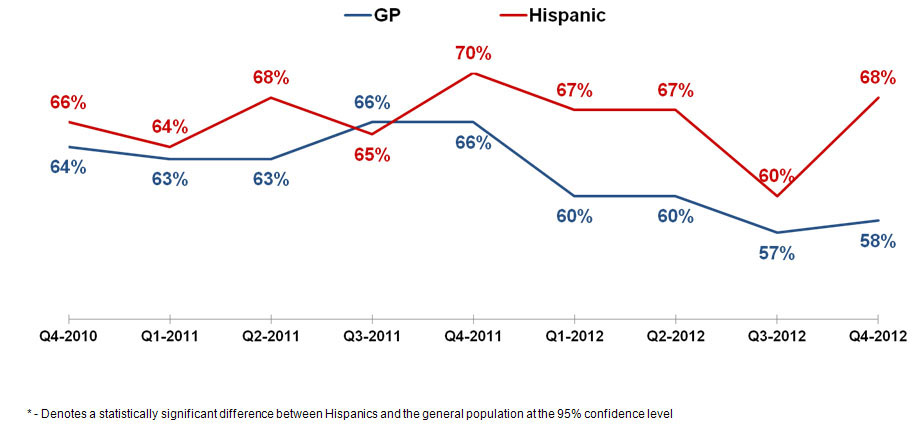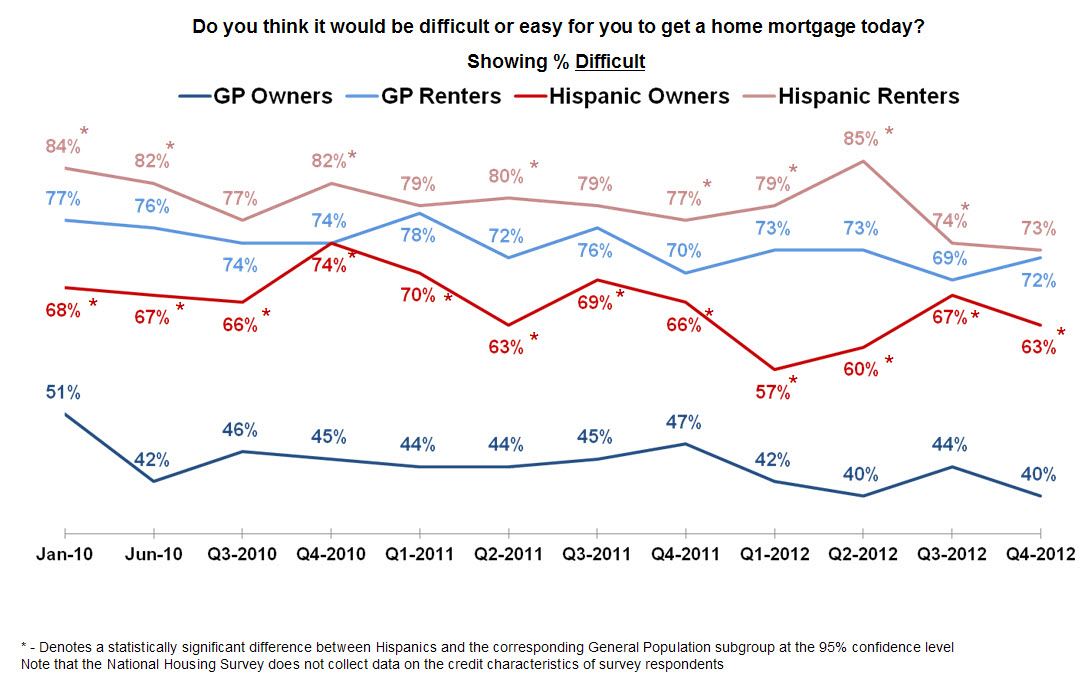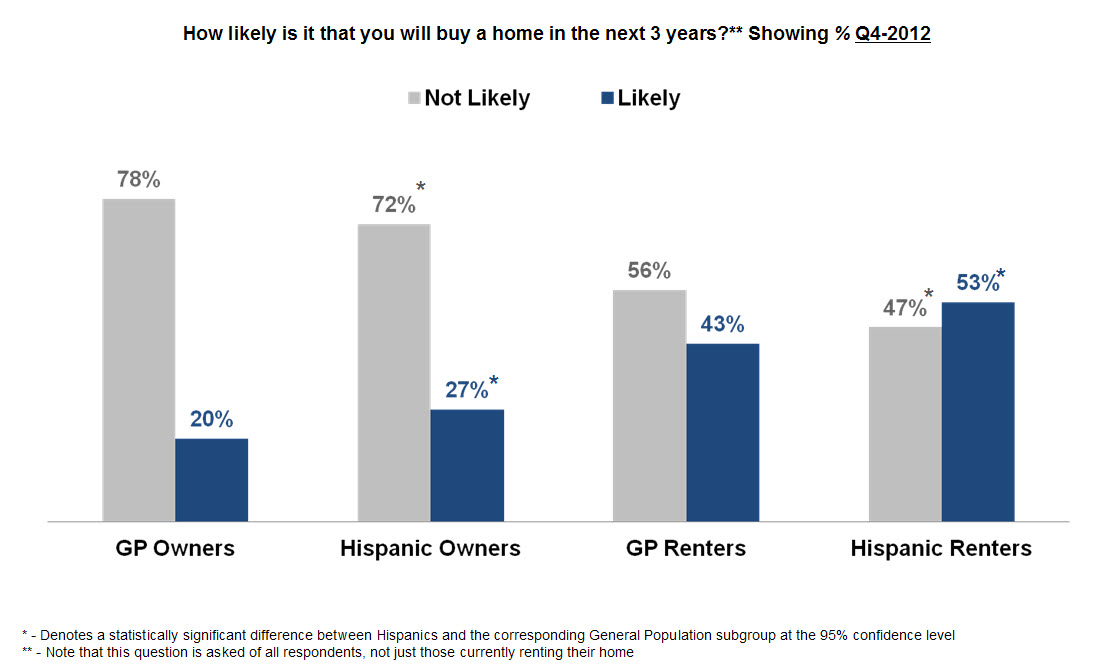Hispanics More Likely To Expect To Buy a Home in Three Years, Despite Mortgage Concern

The Hispanic population is likely to be a substantial source of growth in homeownership demand. According to U.S. Census data, this segment of the population is the fastest growing in the United States and is projected to account for most of U.S. population growth through 2060. The Hispanic share of overall homeownership growth has increased substantially from 15 percent during the 1990s to 35 percent during the 2000s.1
Fannie Mae's National Housing Survey examined attitudes among the Hispanic population toward homeownership and getting a mortgage, as well as expectations for future homeownership, in order to better understand the potential impact of this fast-growing population on future homeownership demand. Our survey results find that Hispanics are more likely than the general population to prefer owning and to expect to buy a home in the near term, despite concerns about getting a mortgage.
At 91 percent, Hispanic homeowners are as likely as the general population of homeowners to say that owning makes more financial sense than renting, as we see in the first chart below. However, the share of Hispanic renters who say owning makes more financial sense stands at 88 percent as of Q4 2012, well above the 71 percent share for renters as a whole. This gap between Hispanic renters and all renters has been growing over the last few years as more Hispanic renters favor owning, while the share of the general population of renters that prefer owning has held relatively steady. When choosing between the lifestyle and financial benefits of owning, lifestyle benefits – such as having a good place to raise a family, control to make renovations, and living in a preferable location – are more popular among the Hispanic population at 68 percent than the general population at 58 percent, as seen in the second chart below.




Hispanics consistently have been much more likely than the general population to think that it would be difficult for them to get a mortgage. The difference in perceived difficulty of getting a mortgage is particularly apparent when comparing Hispanic homeowners to the general population of homeowners.2

Despite a greater concern about their ability to get a mortgage, Hispanic owners and renters both are more likely than their general population counterparts to expect to buy a home in the next three years.

The popularity of owning among the Hispanic population bodes well for the future of homeownership in America, given Hispanic population growth projections and the Hispanic share of overall homeownership growth over the last two decades. Hispanic expectations for buying in the next three years are an encouraging sign for the ongoing housing market recovery. However, concerns about the difficulty of getting a mortgage are more common among the Hispanic population. For any aspiring homeowner, attaining the necessary income, credit history, and savings toward a down payment will be critical to realizing expectations for homeownership in the future.
1 Both Hispanic and overall homeownership rates declined during and after the recession, though the Hispanic homeownership rate declined faster and remains lower, at 46 percent, than the overall homeownership rate of 64 percent as of 2012.
2 Note that the National Housing Survey does not collect data on the credit characteristics of survey respondents.
Sarah Shahdad
Strategic Planning Analyst
Economic and Strategic Research Group
October 17, 2013
The author thanks Steve Deggendorf, Doug Duncan, Tom Seidenstein, Pat Simmons, and Orawin Velz for valuable comments in the creation of this commentary. Of course, all errors and omissions remain the responsibility of the author.
Opinions, analyses, estimates, forecasts and other views of Fannie Mae's Economic and Strategic Research (ESR) group included in this commentary should not be construed as indicating Fannie Mae's business prospects or expected results, are based on a number of assumptions, and are subject to change without notice. How this information affects Fannie Mae will depend on many factors. Although the ESR group bases its opinions, analyses, estimates, forecasts and other views on information it considers reliable, it does not guarantee that the information provided in these materials is accurate, current or suitable for any particular purpose. Changes in the assumptions or the information underlying these views could produce materially different results. The analyses, opinions, estimates, forecasts and other views published by the ESR group represent the views of that group as of the date indicated and do not necessarily represent the views of Fannie Mae or its management.
The views expressed in these articles reflect the personal views of the authors, and do not necessarily reflect the views or policies of any other person, including Fannie Mae or its Conservator. Any figures or estimates included in an article are solely the responsibility of the author.
